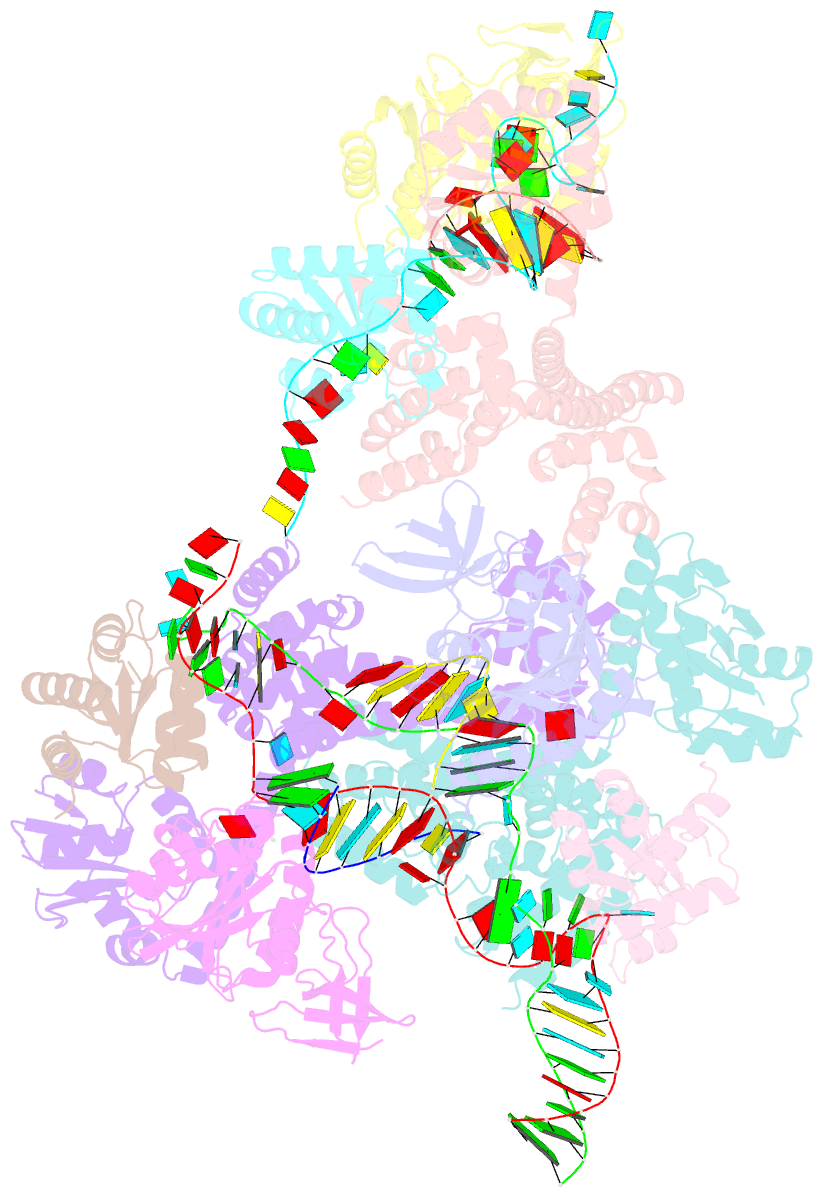Summary information and primary citation
- PDB-id
- 3pla; SNAP-derived features in text and JSON formats;
DNAproDB
- Class
- transferase-RNA
- Method
- X-ray (3.15 Å)
- Summary
- Crystal structure of a catalytically active substrate-bound box c-d rnp from sulfolobus solfataricus
- Reference
- Lin J, Lai S, Jia R, Xu A, Zhang L, Lu J, Ye K (2011): "Structural basis for site-specific ribose methylation by box C/D RNA protein complexes." Nature, 469, 559-563. doi: 10.1038/nature09688.
- Abstract
- Box C/D RNA protein complexes (RNPs) direct site-specific 2'-O-methylation of RNA and ribosome assembly. The guide RNA in C/D RNP forms base pairs with complementary substrates and selects the modification site using a molecular ruler. Despite many studies of C/D RNP structure, the fundamental questions of how C/D RNAs assemble into RNPs and how they guide modification remain unresolved. Here we report the crystal structure of an entire catalytically active archaeal C/D RNP consisting of a bipartite C/D RNA associated with two substrates and two copies each of Nop5, L7Ae and fibrillarin at 3.15-Å resolution. The substrate pairs with the second through the eleventh nucleotide of the 12-nucleotide guide, and the resultant duplex is bracketed in a channel with flexible ends. The methyltransferase fibrillarin binds to an undistorted A-form structure of the guide-substrate duplex and specifically loads the target ribose into the active site. Because interaction with the RNA duplex alone does not determine the site specificity, fibrillarin is further positioned by non-specific and specific protein interactions. Compared with the structure of the inactive C/D RNP, extensive domain movements are induced by substrate loading. Our results reveal the organization of a monomeric C/D RNP and the mechanism underlying its site-specific methylation activity.





